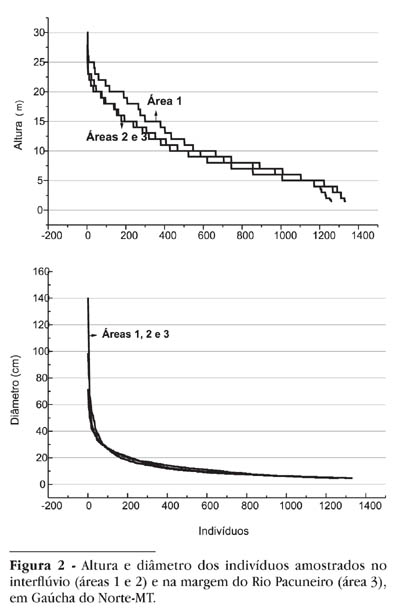This paper shows the structure of patch of forest at Gaúcha do Norte-MT (13° 10'S e 53° 15' O) in southern Amazonia. For the phytosociological survey, the 3 sample areas of 1 ha were subdivided into 50 sections of 10 x 20 m. All the individuals with circumference at breast height (CBH) > 15 cm were sampled. To characterise the structural similarity between the areas, correspondence analysis (CA) was used. The indicator species of the interfluvial environments and of the areas subject to flooding were obtained using TWINSPAN (Two way indicator species analysis) and a system of weights. It was observed that the forests present in the Pacuneiro river basin belong to the same phytogeographical unit, but may present floristic and structural subtypes according to the relief position, the proximity to rivers and streams and the stratum analysed, demonstrating the predominance of some species, or even possible endemic species, in certain areas or stratums. The formation demonstrated a comparatively low alpha (2.91 - 3.50) and beta beta diversity (3.62 a 3.86) which is not common in Amazonian forests. Various hypothesis may explain this diversity, such as the low rainfall and high seasonallity, the apparently homogenous regional physical environment favourable to competing species, or historic events such as possible exploration by indigenous tribes or the recent expansion of these forests over savannic areas.
Amazonia; Xingu; tropical rain forest; tropical evergreen forest; forest structure















